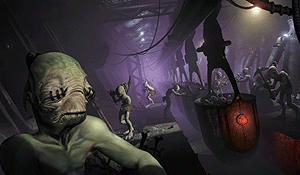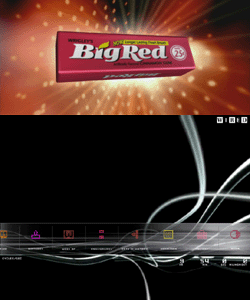Which 3D packages will get you work and which ones will leave you feeling unwanted? You better choose carefully and John Edgar Park is here to help you out with the decision.

As a 3D animator, you are probably an expert in one software package. You live or die by not only your artistic skills, but also your in-depth knowledge of your chosen animation package. Your ability to create great animation is only realized once you can control your tools effortlessly. Sometimes, however, it is this very same specialization that determines the companies or clients for which you can work. There are often postings on job boards that read: "LightWave Character Animator Wanted" or "Maya Effects Artist Needed." Most animators cannot afford the time or the money to become fluent in more than one 3D program, so it is important to choose your killer app wisely. Which 3D packages will get you work, and which ones will leave you feeling unwanted?
For the purposes of this article, let's subdivide the 3D animation market into three categories: games, broadcast and film. Each of these industries has its own special requirements and tends to favor certain 3D software. 3D for games requires strong polygonal modeling and texturing tools, as well as an open SDK for hooking assets into the game code. Animation packages for broadcast rely on versatile effects, ease of use and beautiful, quick renderers. Finally, film animation software must have great animation controls, customizable interfaces and the ability to interact with other software, such as RenderMan or in-house tools. These are general guidelines, of course, not hard-and-fast rules. Many games now include pre-rendered cinematics creating them requires tools similar to those used for broadcast and film animation. Some film effects shots have been done with more mid-level packages than you might expect.

The Right Tool For the JobGames: 3D Studio Max reigns supreme. With nearly every development house using it, the game artist needs to know Max. Two other strong applications in this field are Maya and Softimage, but even with Microsoft Xbox middleware commitments to Maya, listings on Gamasutra.com's job board reveal close to 90% Max penetration into the game art market.
Broadcast: There are some commercial studios who stick with Mac tools, so Electric Image and LightWave are strong here; with the release of Maya on the new Macintosh OS X we'll see how long this holds true. On the Windows side, LightWave, Max, Maya and Softimage come up most frequently, but this is still fairly open territory, as there are so many boutiques doing broadcast work, and the right artist can sometimes choose their toolset.

Gene Nazarov, 3D animator at commercial house ATTIK, says, "Maya is we use. I started with 3D Studio Max, but soon realized how much more potential Maya has. The capabilities are broader and easier to digest, the animation is better and more reliable. No wonder all the movie studios are turning toward this application."
Film: While more films than ever are using LightWave and Max for effects and animation shots, there are really two main packages in this market: Maya and Softimage. Does that mean that you need to run out and learn Maya or Softimage if you want to work in film? The answer is yes and no.
Stuart Lowder, animation manager at Industrial Light & Magic, puts less emphasis on software knowledge and more on an applicant's animation skills. "I don't think it matters, which software you learn, as long as you get into a package and show the ability to animate. It's not the specific software -- you can really demonstrate animation talent with puppets. What we would be looking for is the skill set of an animator, more than software knowledge.
"If you want to be an effects animator, Maya is what we use; on the character animation side it's Softimage. Once we've hired someone, [we provide] all the technical training they'll need. This runs about eight weeks, and assumes that the animation skills are there, so we don't have any support for teaching people how to animate. That said, the more technical skills you have the better off you're going to be. I compare technical skills in 3D animation to having great drawing skills for traditional animators."
And in most cases, a large production will involve the use of many different 3D packages. Michael David Smith of Softimage says, "Large companies use everyone's software; if you look at the demo reel for any 3D program, they all share many of the same shots. It's the smaller companies who choose just one package because of a tighter budget."
The Numbers
Most of the employers' listings on the job board at CreativePlanet.com link a specific 3D package to a job opening. Here are the percentages from the April listings:
Maya: 45%Max: 21%Any: 17%LightWave: 6%Softimage: 6%Other: 5%
The 17% that responded "Any" usually require knowledge of at least one high-end 3D app, such as Maya, Max, Softimage, LightWave, Houdini, Electric Image, Cinema 4D, etc.

Spontaneous Combustion is a digital studio specializing in design, visual effects and animation for advertising, broadcast and film with clients such as AT&T, Audi, Estee Lauder and ESPN. Sam DeWitt, head of CGI, says, "Maya is probably the most widespread in the post industry at the moment, but Softimage seems to be finally gaining back some lost ground. In terms of learning 3D, 3D Studio Max could be conceived of as the easiest, and with such a wide and diverse user base the resources for it are amazing. Max does seem to be slowly gaining ground in both film and television work, and its tight integration with other discreet products makes it a good bet for the future."
In reality, all of these high-end packages can be used for projects in any of the three industry sectors. Phil Miller, senior director of Software Products at discreet, says that of the approximately 150,000 seats of 3D Studio Max worldwide he estimates that 50% of those are used in the game industry, 30% in film and post-production and 20% in design, Web, architectural and science applications. His prognosis for Max's future is good: "The number of seats of Max being sold to the commercial sector is increasing at a rate higher than all of the competition's combined, so while there's no doubt that Maya has swept the film industry ousting Softimage boutiques have switched over to Max."

Keep An Eye On The Market
So, which one is right for you? There are no neat answers to this question. Michael Wharton, animator at Quiet Man NYC, explains: "A student needs to be concerned with marketability; that is to say, can a company you hope to work for afford to bring in a person who doesn't know their particular software and train them? Or, do they need someone they can immediately drop into production? At Quiet Man we are heavily invested in Softimage, so for our own selfish reasons, we'd love to see this product take off and blow everything else away. However at this point in time, Maya is still the 3D stronghold, so much so that some clients have even used it in conversation as almost the...brand name of all 3D packages. As absurd as I think that may be, it seems to be the perception."
It would be terrific if every studio could run a training program to bring in the best animators, regardless of software knowledge. Unfortunately most smaller shops don't have that luxury. Constraints of time and money force them to hire animators who can jump right into the production pipeline. The bottom line is, for the majority of the positions out there, you will only get the job if your have the skills and you know the right software. The numbers suggest that it's not a bad time to be an adept Maya animator. However, Max, Softimage and LightWave are good bets, too but don't forget, first and foremost, to hone those animation skills!
John Edgar Park is a 3D animator, instructor and writer based in Los Angeles. He received his B.A. in Drama from the University of Virginia.







